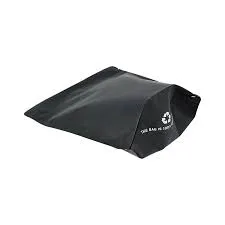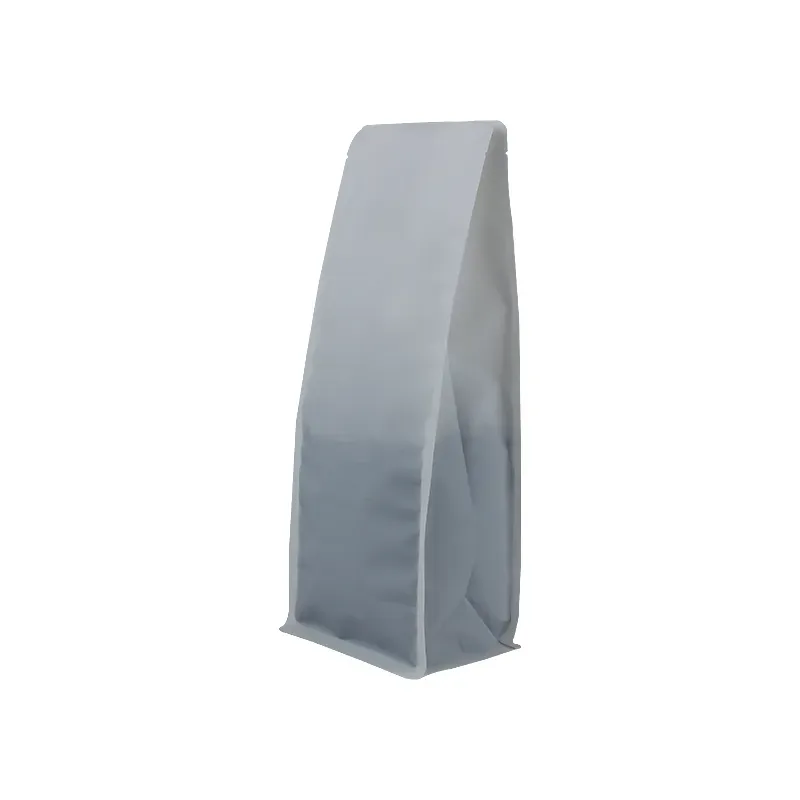types of coffee bags
Views :
Update time : 1 月 . 15, 2025 09:35
Exploring the diverse world of coffee bags uncovers not only a variety of styles but also unveils practical aspects that cater to an array of consumer preferences. Coffee bags, more than just a storage solution, can significantly impact the freshness, flavor, and aroma of your beloved beans. Understanding these different types ensures that coffee enthusiasts choose the best option for their specific needs, enhancing their coffee experience.
4. Quad Seal Bags Quad seal bags are distinguished by their innovative design, offering four panels that provide ample space for branding and product information. This type of bag is highly versatile, suited for both small and large quantities of coffee. Its unique structure offers enhanced strength and stability compared to traditional bags, making it ideal for heavier weights. The tight seals ensure that contents remain protected from oxidation and moisture, prolonging the shelf life of the coffee beans within. 5. Stand-Up Pouches Stand-up pouches feature a wide, flat base allowing the bag to stand on its own, which is excellent for shelf presentation. This flexibility is further enhanced with optional features like resealable zippers or spouts. These bags are manufactured using layered barrier materials, ensuring contents are shielded from environmental factors that could compromise quality. Stand-up pouches are appreciated for their user-friendly design and are often utilized for single-origin or speciality coffee products where presentation and convenience are key selling points. 6. Grain-Pro Bags Emerging as a vital option for bulk coffee storage and transport, Grain-Pro bags offer an innovative solution designed to extend the life of coffee beans. Made from ultra-durable, eco-friendly materials, these bags provide a hermetic storage environment, effectively locking out moisture and pests. Their ability to maintain low oxygen levels and prevent mold growth makes them ideal for exporting and warehouse storage, reducing quality loss over time and maintaining peak freshness until the beans are ready for roasting. Each type of coffee bag serves a specific purpose, meeting various needs from premium preservation to eco-conscious packaging. Selecting the right coffee bag not only enhances the product’s shelf life and quality but also aligns with brand identity and consumer values, establishing a trustworthy relationship that fosters customer loyalty in the competitive coffee market.


4. Quad Seal Bags Quad seal bags are distinguished by their innovative design, offering four panels that provide ample space for branding and product information. This type of bag is highly versatile, suited for both small and large quantities of coffee. Its unique structure offers enhanced strength and stability compared to traditional bags, making it ideal for heavier weights. The tight seals ensure that contents remain protected from oxidation and moisture, prolonging the shelf life of the coffee beans within. 5. Stand-Up Pouches Stand-up pouches feature a wide, flat base allowing the bag to stand on its own, which is excellent for shelf presentation. This flexibility is further enhanced with optional features like resealable zippers or spouts. These bags are manufactured using layered barrier materials, ensuring contents are shielded from environmental factors that could compromise quality. Stand-up pouches are appreciated for their user-friendly design and are often utilized for single-origin or speciality coffee products where presentation and convenience are key selling points. 6. Grain-Pro Bags Emerging as a vital option for bulk coffee storage and transport, Grain-Pro bags offer an innovative solution designed to extend the life of coffee beans. Made from ultra-durable, eco-friendly materials, these bags provide a hermetic storage environment, effectively locking out moisture and pests. Their ability to maintain low oxygen levels and prevent mold growth makes them ideal for exporting and warehouse storage, reducing quality loss over time and maintaining peak freshness until the beans are ready for roasting. Each type of coffee bag serves a specific purpose, meeting various needs from premium preservation to eco-conscious packaging. Selecting the right coffee bag not only enhances the product’s shelf life and quality but also aligns with brand identity and consumer values, establishing a trustworthy relationship that fosters customer loyalty in the competitive coffee market.
Recommend products
Read More >>
Related News
Read More >>













